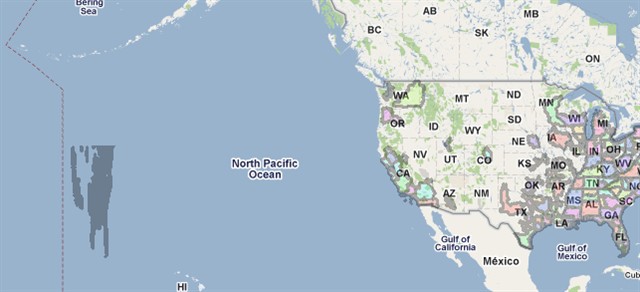We have been having some trouble getting shapes to display properly on Google Maps. We are constructing a WMSOverlay using Google's "new google.maps.ImageMapType(wmsOptions);" function. The wmsOptions takes a function "getTileUrl", which is the URL we are constructing to query the ThinkGeo map shapes server.
The coordinates passed to the server are the upper-left and lower-right points of the tile needed. However, if the user is looking at a region which spans the international date line (cuts Alaska and Russia), ThinkGeo's MapSuite.Core.RectangleShape gets confused and attempts to get obtain an image of the entire world and shrink it down into a tile, then drop it on the map.

The edges of the bounding box I'm sending look like this
MinLatitude: 0
MinLongitude: -90
MaxLatitude: 66.51326
MaxLongitude: 180
Any ideas on how to get around this? Client-side or server-side options are both appreciated.
